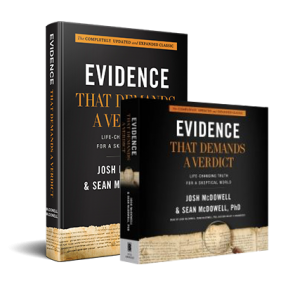Vetted for Historical Reliability, the Bible Stands Strong.
Welcome to our ninth blog post in this series. If you’d like to catch up from the start, here’s the link to the first blog we posted: Apologetics: Apologizing for Believing in God?.
Apologetics — the defense of Christianity — is not about our apologizing for our Christian beliefs, but rather our sharing of the plethora of historical evidence that confirms the Bible’s validity — and, thus, Christ’s claims. We can all be confident apologists.
No more replying, “I don’t know if there’s evidence for that.” Armed with facts, you’ll be able to have a respectful, impactful conversation with skeptics about the truth of the Gospel.

The Abundance of Biblical Manuscripts
Scholars believe the New Testament manuscripts to be the most frequently copied and widely distributed books of antiquity. The abundance of Scriptural manuscript copies have made it possible to reconstruct the original text with virtually complete accuracy. The authenticity of the New Testament text we have today rests on the foundation of a massive amount of historical documentation.
A great source for manuscript study, should you choose to invest some time doing so, is the Leuven Database. Another is the Center for the Study of the New Testament Manuscripts. It fills me with awe to view a sixth century papyrus fragment containing the writing of Luke!
QUESTION: If stacked, how high do you think the New Testament manuscripts would be? Go on, take a guess!
Some facts:
* The earliest manuscript of plays by Sophocles, one of three great tragic playwrights of Athens, is about 3rd century BC, with about 200 extant manuscripts.
* The earliest of Plato’s Tetralogies (many of his works were compiled into groups of four called “Tetralogies”) is AD 895, with 200+ extant manuscripts.
* The earliest surviving manuscript of Homer’s The Iliad, which highlights the final weeks of the Trojan War, is about 400 BC. More manuscript discoveries have been made of this epic poem than any other classical work, yet the number of extant manuscripts is less than 2,000.
* Of just the 5,800+ Greek New Testament manuscripts, there are more than 2.6 million pages! Combining both the Old and New Testament, we have more than 66,000 manuscripts and scrolls!
ANSWER: That equates to one mile of New Testament manuscripts (and 2.5 miles for the entire Bible), compared with an average four feet of manuscript by the average classical writer.
Writes New Testament scholars and biblical linguistic experts Stanley E. Porter and Andrew W. Pitts:
When compared with other works of antiquity, the New Testament has far greater (numerical) and earlier documentation than any other book. Most of the available works of antiquity have only a few manuscripts that attest to their existence, and these are typically much later than their original date of composition, so that it is not uncommon for the earliest manuscript to be dated over nine hundred years after the original composition.
Reliability: Passing the Bibliographic Test
To further your growing knowledge, let’s look at the bibliographical test, which scholars employ to determine the historical reliability of any and all ancient literature, including the New Testament.
Scholars must use the bibliographic test with all ancient literature — including the non-Christian classics — as no original documents of any ancient literature exists.
The bibliographical test looks at manuscript transmission — how documents reach us. As scholars do not have the original documents of the Scriptures, they have had to determine if the existing (extant) copies of the originals are reliable The greater the number of copies, and the earlier their dating, the easier it is to reconstruct a text closer to the original and identify errors or discrepancies in subsequent copies.
Scholars representing different specialties and eras agree that bibliographical test validates and confirms that the New Testament has been accurately transmitted throughout the centuries.
So any skeptic choosing to reject the transmissional reliability of the Bible employs an obvious double standard. To reject the Bible’s vetted reliability requires also considering unreliable all other manuscripts of antiquity.
Says New Testament scholar J. Harold Greenlee in his Introduction to New Testament Textual Criticism:
Since scholars accept as generally trustworthy the writings of the ancient classics even though the earliest manuscripts were written so long after the original writings and the number of extant manuscript is in many instances so small, it is clear the reliability of the text of the New Testament is likewise assured.
Is that cool or what? Some great information to have on hand and share the next time you’re asked why you believe in the Bible. In next week’s post we’ll look at eight tests that prove the accuracy of the New Testament accounts. See you then!

This blog post highlights Josh and Sean McDowell’s recently revised apologetics classic, Evidence That Demands a Verdict. We are certain this fully updated and expanded resource will be an effective evangelism tool for you, and strengthen your faith by answering the toughest questions tossed to you by skeptics. Know what you know, because it’s true. But share this truth with LOVE.



